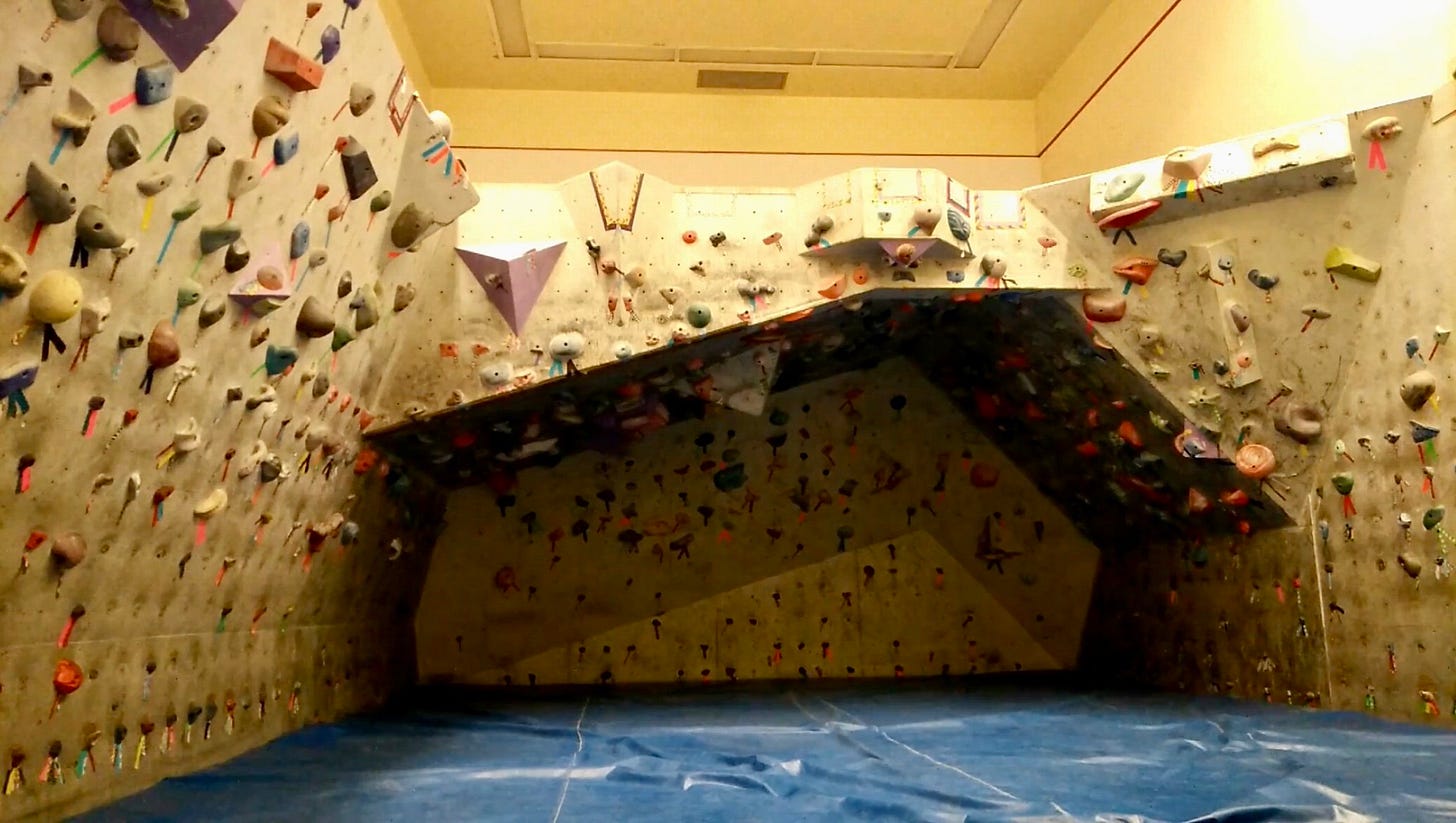Discovering the art of solving vertical puzzles
I, like many of you, value and cherish the moment of discovering a new experience and becoming captivated by it to the point where it becomes an obsession.
Discovering my obsession with rock climbing started back in my sophomore university days when I noticed my bud return from his classes for the day covered in white chalk marks like someone either played a prank or he started a new gig as an instructor at the university using the traditional chalk and board method to teach students. Since my curiosity took the best of me, I asked him why he was covered in the white sandy textured substance. Uncovering the answer to that question literally transformed my life.
We took a short trip to the athletic center of the university campus, where we walked into a grungy room that had the strongest stench of sweat and white pixy dust, and people clung to the weirdly shaped and coloured holds on different angled walls retrofitted in the gym which was all considered climbing.

The rules of this sport are quite simple (By that, I mean the bouldering discipline of rock climbing); if you are climbing indoors at the gym setting like in the one above, then you will notice that most often than ever, each gym will usually set routes using the same coloured holds where the starting and finishing position of the climb will be defined and marked by distinct tape or other wall markings.
To start climbing, you need to hold onto the designated starting holds and maintain your balance by gripping onto the marked holds while keeping your feet off the ground; essentially, you are using your hands and feet to support your body weight. After that begins the fun part, where you have to solve the puzzle of finding your way up to the finish. Here you have to decide your next move of which limb to move with. It's similar to playing chess, as each decision you make will affect the outcome of your next move since you could find yourself in an off-balance position or entwined with your limbs making it impossible to progress forward unless you drop down and start all over again. This is the challenging part, and the majority of people give up at this point because they must maintain their finger grip, fight through the pain/struggle of holding on and simultaneously figure out how to get to the top based on their body's range of motion.
Back then, It all looked so comical watching grown adults using rubber shoes to climb walls with their fingers and toes, precariously balancing to reach the end goal. At first, I didn't see the point in it all, but once I tried it myself, I became fascinated. This sport taught me valuable life lessons and allowed me to discover hidden treasures, keeping me hooked.
One of the main lessons that stuck along and to date keeps me driven is that,
in rock climbing and life in general, success is not measured solely by reaching the pinnacle of a climb but by the journey undertaken to get there.
There will always be routes that will be easy to climb, and you can scale them without any trouble on your first attempt, but then there will also be climbs that will look and feel impossible when attempting to try them.
But as climbers, you have to learn to cherish the process of embracing the moments of struggle as an opportunity for growth.
Each setback becomes a lesson in resilience, fostering a deep understanding that failure is merely a stepping stone toward the triumph of reaching the top. Where 99% of your journey will invariably include the struggle and the failed attempts, which constructs the invisible foundation on which that 1% success is carved.



